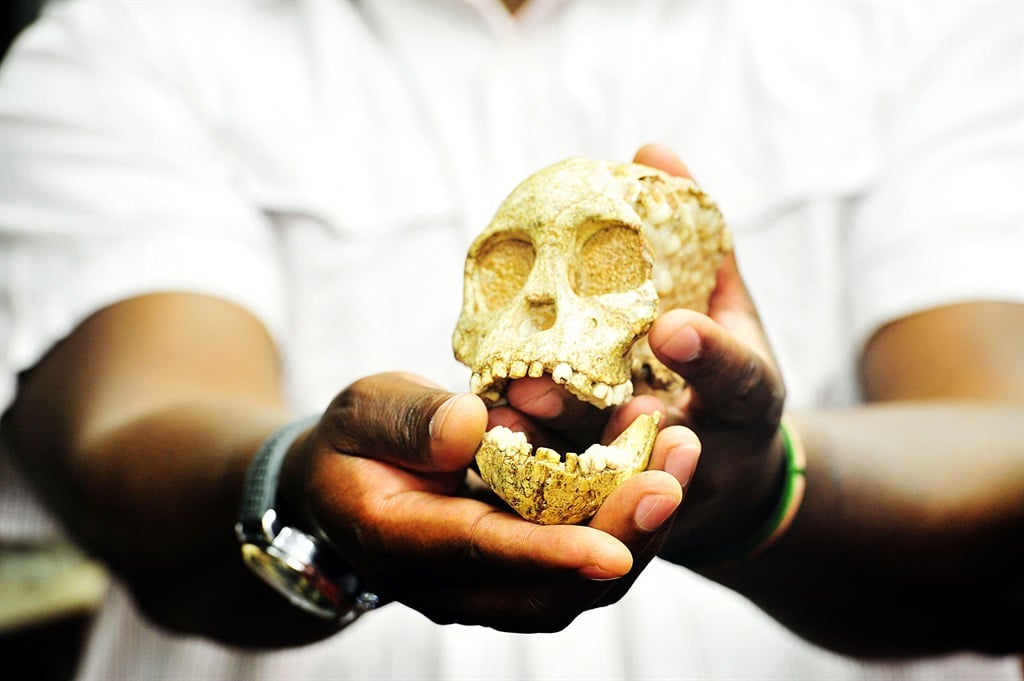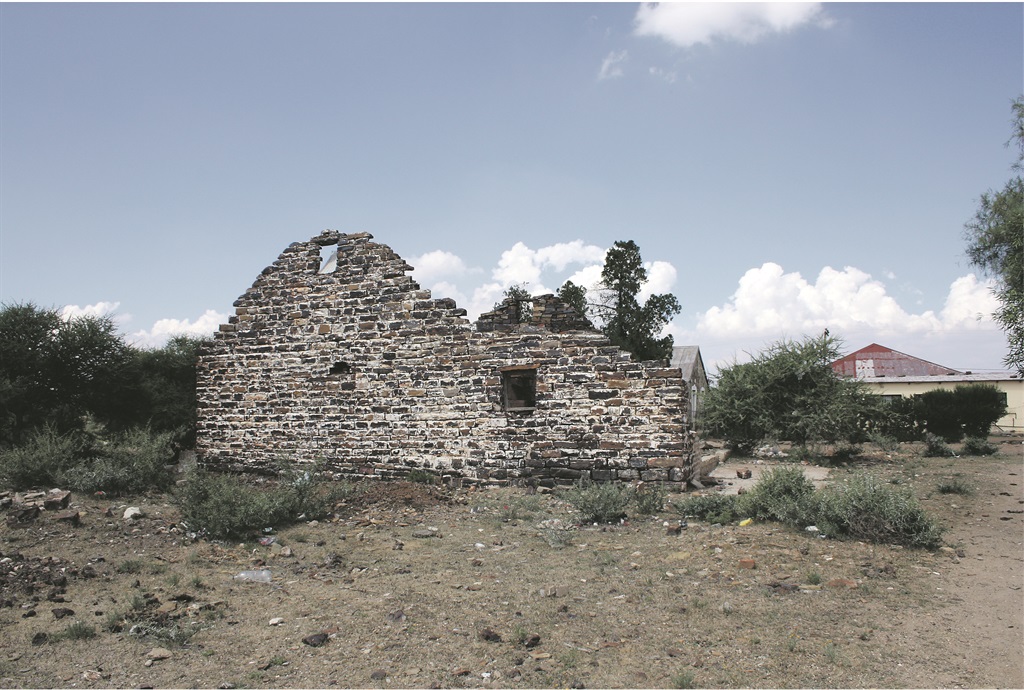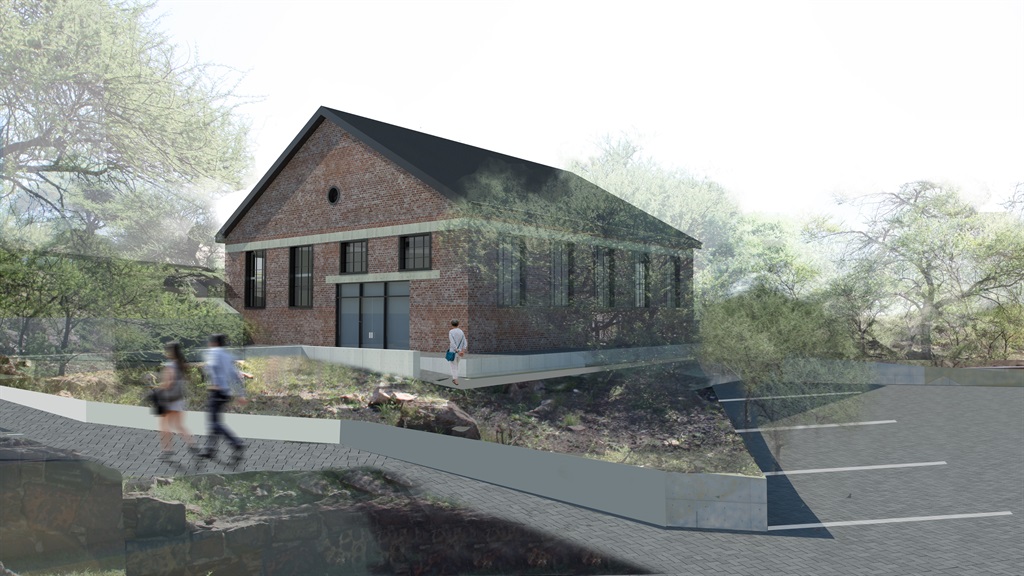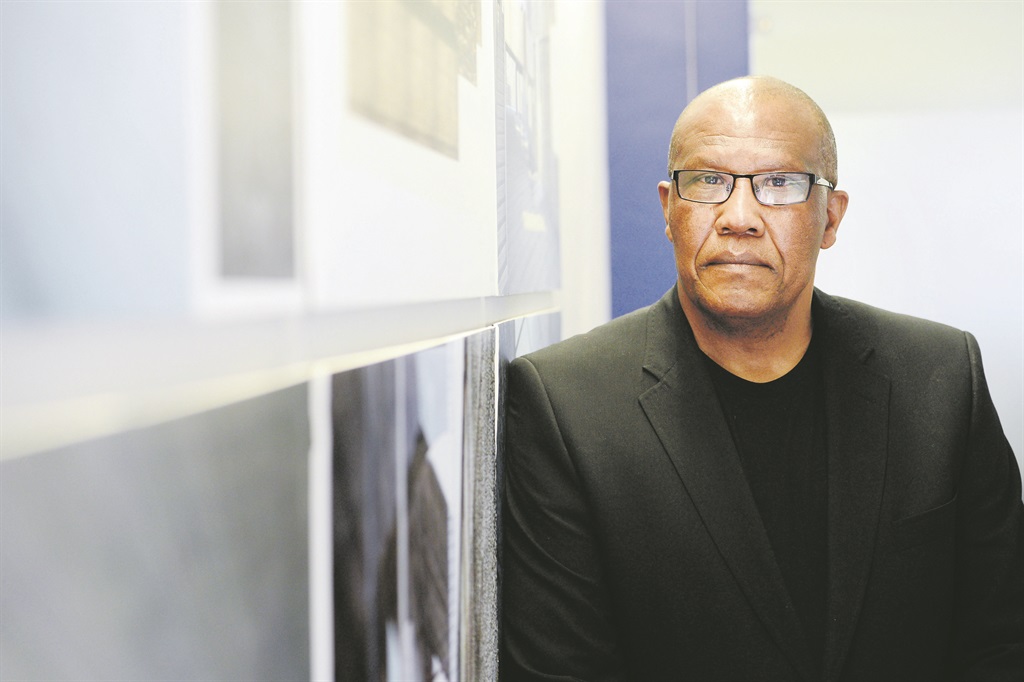
The historic Taung Skull Heritage Site is falling apart, with pullback on a multimillion rand upgrade leaving the Unesco-designated site dangerously unprotected. Garreth van Niekerk investigates.
Rusted roof sheeting dangles precariously above me as I step into the old Buxton Mine ruins where, just metres from where I stand, the 2.5 million-year-old skull belonging to the Taung Child was unearthed in 1924.
Back then, the mine was still operational, extracting massive quantities of limestone, but today, almost 100 years since the discovery of the skull by an unnamed mine worker, the site is abandoned.
Where is the Taung Skull Heritage Site?
Only a lone donkey cart interrupts the quiet as I set off to explore, leaving behind pools of water that have settled on the old powerhouse’s new concrete floors. The new floors were meant to be the foundations for a state-of-the-art scientific laboratory and research facility – the first buildings of the newly upgraded Taung Skull Heritage Site.
The first phase of the project was due to launch to the public in March next year, but this will no longer happen. To find out what went wrong, I drove four and a half hours from Johannesburg to come to the rural village of Taung in North West.
I try to imagine visiting the Taung Skull museum, then having lunch next door at a fine-dining restaurant or picnic site, then visiting sacred prayer sites and a mining history museum.
Ten of millions already spent
But there is nothing here – despite tens of millions already having been spent on the projected R300 million development.
I peer around the corner of the building in case I have missed something. According to the architectural plans I have in my hands, there should be a new bridge nearby on the old railway line that would connect the labs to the main visitor entrance, but all I find is graffiti scrawled across the 100-year-old stone edifice, reading “one love”.
The first set of buildings was to be designed by award-winning architects Mashabane Rose Associates (MRA), the firm responsible for huge heritage projects such as Freedom Park, the Apartheid Museum and the forthcoming dinosaur egg discovery museum in the Free State.
Meant to be a star in the crown of the North West
Before visiting, I tried reading up on the project. Information is hard to come by, but I learnt that five years ago, the North West department of rural, environment and agricultural development undertook one of its most ambitious public sector projects to date – a multibillion-rand initiative to upgrade the Taung Skull Heritage Site’s facilities, infrastructure and conservation measures. It was to be the star in the crown of the North West, a promise to the rural communities of a new era of jobs, development and tourism.
In a proposal document for the site in #Trending’s possession, the project’s aim was to make the site accessible to visitors, with the ultimate aim to “create self-sustainable socioeconomic and ecological rural environments”. It would involve the participation of the local community for a contextual and historical understanding of the site, which was designated as a national heritage site in 2002 and became inscribed on the Unesco World Heritage List in 2005 – one of only eight other World Heritage Sites in the country, alongside the likes of Robben Island, Mapungubwe and the Drakensberg.
After a bit of hustling, I managed to gain access to what is referred to as the core area – a one-and-a-half square kilometre conservation site where, according to the proposed plans, three routes will converge: the Skull Route, which takes you through the Taung discovery narrative; the Cave Route, which explains the site’s archaeological narrative; and the Eagle Route, about the site’s ecological narrative, named after a major discovery by South African paleoanthropologists a few years ago that revealed that the Taung Child was killed by a now-extinct giant eagle, a mystery that had perplexed archaeologists since the 20s.
I start on the Skull Route. The organic paths culminate at the old monument to the skull’s discovery: two humble rock plinths located in a valley between towering limestone outcrops. The first of them, erected by the SA Heritage Resources Agency, explains the skull’s discovery: “The fossilised face, lower jaw and endocranial cast of the Taung Child, a young individual with human-like characteristics, was found in 1924 at this limestone quarry.
“Professor Raymond Dart, who gave this fossil the name Australopithecus africanus, or southern ape of Africa, recognised its importance in indicating that the early ancestors of humankind had come from Africa. This was confirmed by subsequent discoveries of similar fossils in Gauteng and Limpopo.
“The associated animal bones from the Thabaseek tufa date the Taung fossil at about 2.5 million years old.”
Where I’m standing, there should be a concrete viewing platform – two angular boxes abutting each other – from where one could look out over the whole site, connecting each of the individual routes. From here I can see what is going on in the mine complex below, where the visitor centre, museum and conference facilities were meant to be.
I watch as a roving troupe of monkeys swing between the unfinished rafters and settle between unused bags of cement. One monkey seems to have noticed me and scurries to get the younger monkeys into the safety of an abandoned mine worker’s cottage. The architects have reimagined these century-old ruins as a new structure that would house a row of craft shops to sell goods made by the local community. The structure is designed as a “box within a box” that preserves the stone ruins by inserting a contemporary piece of architecture, designed to mimic the original form of the ruins, inside the old ruins. But only building rubble indicates that any activity, other than that of the monkeys, has happened here in the last 100 years.
So, what went wrong?
It’s a question I ask architect Phill Mashabane. In July this year, MRA, Mashabane tells me, filed a notice to suspend its services to the North West provincial government after not being paid for any of the work they had done on the Taung Skull Heritage Site.
Mashabane, who is also a lawyer and mediator, explains that Agridelight, the project’s implementing agent and financial controller – a sort of project manager liaising between government and the principle agent, in this case MRA – wasn’t able to handle the scope of the project, which Mashabane says is massive. He says Agridelight wasn’t able to manage the site, and the funds for the project, adequately.
Contacted for comment, Agridelight’s CEO, Musa Senda, confirmed that his company had received more than R61 million for the project, but that there was a problem with MRA’s invoicing, and that Agridelight did have the capacity to handle a project of this size.
' Project’s financial controller has never implemented project of this nature or magnitude'
“We have researched Agridelight and they have never implemented a project of this nature and magnitude,” says Mashabane, who rejects Senda’s claims about invoicing procedures. “Their website confirms them as suppliers of goods, not construction project implementers,” says Mashabane.
I go on to agridelights.co.za and on its homepage there is a text slogan placed above a picture of bucolic rural farmlands, asking: “Can you imagine a future where South African farmers are trained and equipped to produce an abundance of quality food for our beautiful nation, sustained from one generation to the next? We can!”
Its projects range from abattoirs to grain silos, seemingly specialising in the supply of agricultural equipment. I couldn’t find any previous experience of civic-, museum- or heritage-related projects within their ambit.
Senda said this week that the group had, in fact, done projects of this nature before. What these projects were, however, was left unclear.
'Emblematic of a larger issue with the tender process'
Mashabane says that MRA was asked to do more than they had agreed to from the beginning and refused to do any more work until they were paid.
A large part of the reason the site is in the dilemma it is today is because of the decision to appoint Agridelight in the first place, Mashabane reckons. It’s emblematic of a larger issue with the tender process and implementing agents in general, he adds. “The government departments and user departments do not have adequate capacity and personnel who have the know-how for this type of project. They tend to bring on board bidders who are price driven and not competency or knowledge driven. This is regrettable.”
So, what next for Taung?
Whether MRA will return to the site, even if payment is made, is unclear. “This is not an easy process,” said Mashabane when I was sitting opposite him in his Forest Town office last week. “We may return, provided that they meet our conditions, which include provision of a payment guarantee from a licensed and recognised financial services provider.” Yet, when we spoke again this week, it seemed to me like things would progress, with Mashabane saying: “It shall be the pride of
the nation.”
'Must be protected.. Animals are destroying invaluable archaeological sites'
Either way, the site needs to be protected to prevent further damage. Animals are destroying invaluable archaeological sites as they roam, and researchers and tourists still struggle to gain access to this important repository of human history. One ray of hope is that the Taung Child’s skull itself, which is widely considered one of the most valuable fossils in existence, is currently kept in a bomb-proof, climate-controlled vault at the University of the Witwatersrand, where we were allowed to photograph it this week for the cover of #Trending.
'Really an iconic fossil and massively important for the world'
Interim director of the Evolutionary Studies Institute at Wits, Professor Bruce Rubidge, tells me that its importance, and that of the site itself, cannot be emphasised enough. “It was the first fossil to provide evidence of humans developing from apes, and so it is really an iconic fossil and massively important for the world. Where such a fossil comes from is also important and, as we know, that is the first site where the Australopithecus africanus was discovered. Scientists say that only one in a million animals and plants that have been in existence become fossils, so every fossil you find is in itself a monument and needs to be treated with the utmost care.”
At the time of speaking to Rubidge, he was in the middle of a three-day conference on the feasibility of paleotourism in South Africa, which he thinks has great potential as an industry. “South Africa has such a remarkable fossil heritage, starting right with the earliest evidence of life 3.5 billion years ago. We have evidence of some of the earliest fish in the world, dinosaurs, the origin of mammals, the origin of humans and the development of man. I think that this project not continuing, after going so far, is a real indictment on the people involved.”
“It always seems impossible until it is done.”
At the time of #Trending going to print, the North West provincial government had not responded to our questions.
As I leave the site, I envision what this place could be.
I can’t help but smile as I turn the corner and on the wall of Taung’s lone grocer, now empty, a huge mural of Madiba is painted. His portrait looks out on the site across the entrance to the visitor centre where the monkeys are currently throwing stones and rummaging through the rubbish. His famous words, painted next to his image, are the last thing I see as I leave Taung: “It always seems impossible until it is done.”
What to read next on Traveller24:
- Maropeng Visitors guide: 6 Ideas to make the most of the Cradle of Humankind
- New discovery of Homo Naledi to be on LIMITED display at Maropeng
- SA's newest fossil discovery zone set to become must-do N2 pit stop




 Publications
Publications
 Partners
Partners
















